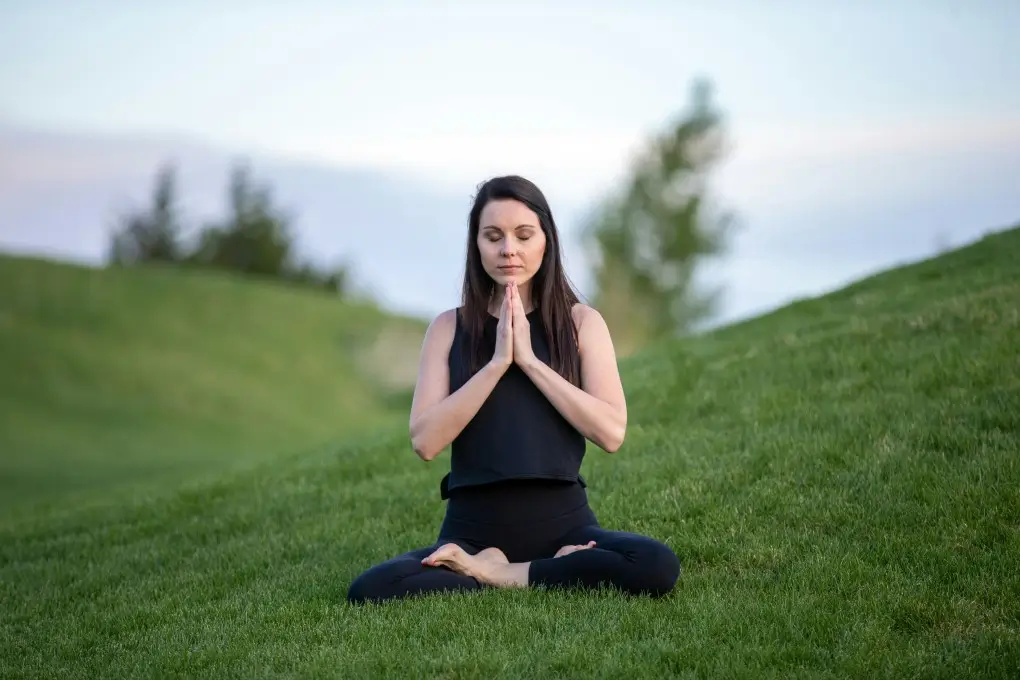Find somewhere quiet to sit or lie down
Creating a serene environment is crucial for a successful meditation session. Find a quiet space where you won’t be disturbed. It could be a cozy corner in your home, a peaceful park, or even a quiet room at work during your break. The key is to choose a place where you feel comfortable and can fully relax.
Get Into a comfortable position
Whether you prefer sitting cross-legged on a cushion, resting in a chair, or lying down on a yoga mat, choose a position that allows you to feel relaxed and at ease. Keep your spine straight and your shoulders relaxed. Experiment with different postures until you find one that feels most comfortable for you.
Focus on your breath
Once you’re settled, begin by bringing your attention to your breath. Notice the natural rhythm of your inhalations and exhalations. You can place one hand on your belly to feel the rise and fall with each breath if that helps. Focus all your attention on the sensation of breathing, allowing everything else to fade into the background.
Be Kind to Your Wandering Mind
As you meditate, it’s natural for your mind to wander. When you notice your thoughts drifting, gently redirect your focus back to your breath without judgment or frustration. Remember, the aim of meditation isn’t to stop your thoughts entirely but to observe them with curiosity and detachment.
Start small
If you’re new to meditation, start with just a few minutes each day and gradually increase the duration as you become more comfortable. Even five minutes of meditation can have a profound impact on your mental well-being. Consistency is key, so aim to practice regularly, even if it’s just for a short time each day.
Expand beyond the breath
While focusing on the breath is a common meditation technique, there are many other methods you can explore as you deepen your practice. You might try body scan meditation, where you systematically bring awareness to each part of your body, or loving-kindness meditation, where you cultivate feelings of compassion and goodwill towards yourself and others. Experiment with different techniques to discover what resonates most with you.
Supplement meditation with yoga and journaling
Incorporating other mindful practices like yoga and journaling can enhance your meditation experience. Yoga helps to quiet the mind and relax the body, making it an excellent complement to meditation. Journaling can provide a creative outlet for processing your thoughts and emotions, deepening your self-awareness in the process.
Be patient with the process
Like any skill, meditation takes time and patience to develop. Be gentle with yourself and trust in the process. There will be days when your mind feels calm and focused, and other days when it seems like a chaotic whirlwind – and that’s okay. Each moment of practice is an opportunity for growth and self-discovery.
CBD and Meditation
Some people find that incorporating CBD (cannabidiol) into their meditation practice enhances relaxation and reduces anxiety. CBD is a non-intoxicating compound derived from the cannabis plant, known for its calming effects on the body and mind. If you’re interested in exploring this combination, consider starting with a low dose of CBD oil or tincture before your meditation session and observe how it affects your experience.
Conclusion
In conclusion, meditation is a powerful tool for cultivating inner peace, clarity, and resilience in the face of life’s challenges. By finding a quiet space, focusing on your breath, and being patient with yourself, you can begin to experience the transformative benefits of meditation in your daily life. So take a deep breath, quiet your mind, and embark on this journey towards greater mindfulness and well-being.
